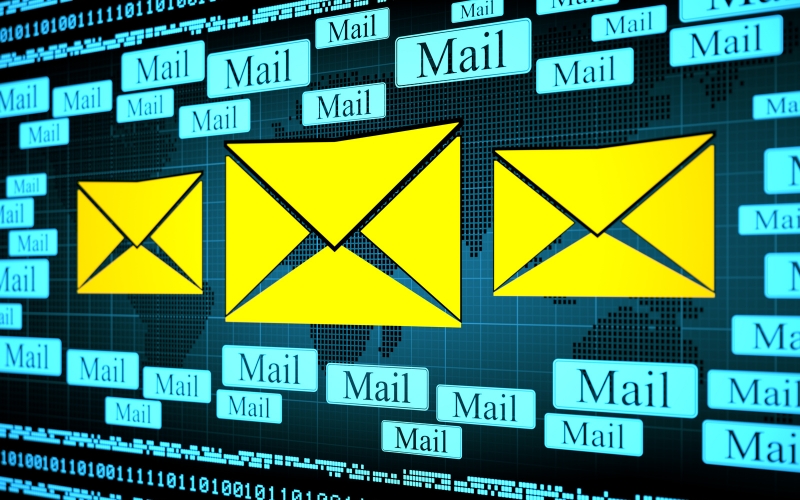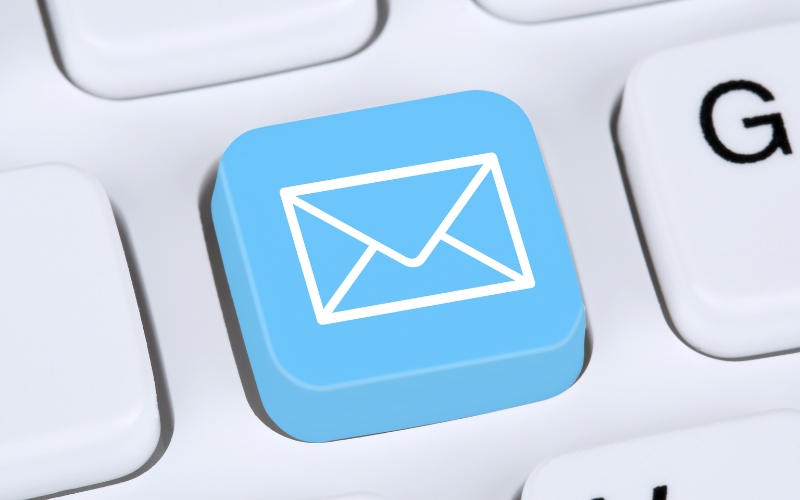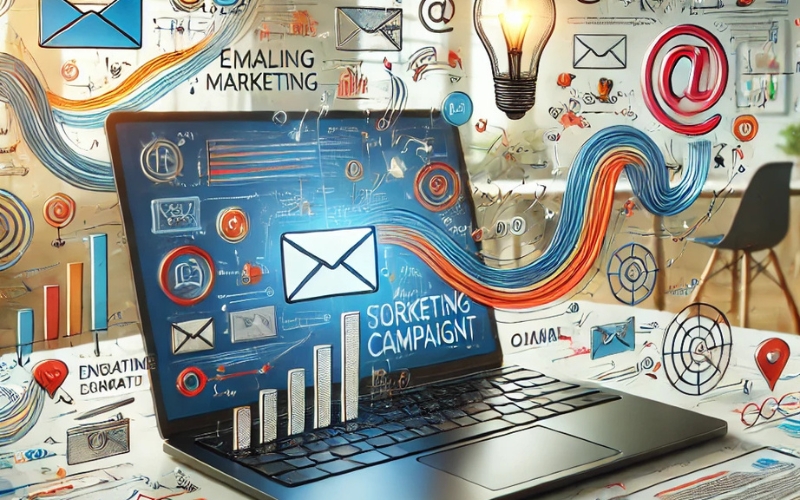Storytelling is a powerful tool that has been used for centuries to captivate audiences, evoke emotions, and drive action. In the world of email marketing, storytelling can transform a simple promotional message into an engaging and memorable experience for your readers. By weaving compelling narratives into your email campaigns, you can create emotional connections with your audience, foster trust, and ultimately increase engagement and conversions. In this article, we’ll explore why storytelling works so effectively in email marketing, the key elements that make a story compelling, and how you can incorporate storytelling into your campaigns to enhance your brand’s communication and drive business growth.
Why Storytelling Works in Email Marketing: The Power of Emotional Connections

Storytelling in Email Marketing is one of the most powerful tools for creating meaningful connections. It goes beyond simply communicating information; it taps into the emotional core of your audience. When done correctly, storytelling in email marketing can trigger emotions that drive readers to take action. The psychological impact of a well-told story can influence decision-making and create a lasting connection with your audience, ultimately improving engagement, open rates, and conversions.
The Psychological Impact of Storytelling on Human Emotions and Decision-Making
Humans are wired to connect with stories, making storytelling in email marketing a highly effective approach. From childhood, we’ve learned about the world through stories—whether through fairy tales, parables, or personal anecdotes. Stories evoke emotions, and these emotions are powerful drivers of behavior. When you use storytelling in email marketing, it can trigger empathy, excitement, or even urgency, prompting the reader to engage with the content or take the desired action.
Research has shown that emotionally engaged customers are more likely to make purchasing decisions. Storytelling in email marketing allows you to break through the noise and make your message stand out. A story doesn’t just inform—it makes the content relatable, memorable, and often more persuasive. When people can connect emotionally with your brand or product through storytelling in email marketing, they are more likely to make a purchase, sign up for your services, or share your content with others.
How Storytelling Builds Trust and Credibility with Your Audience
Trust is an essential factor in any business relationship, and storytelling in email marketing can help establish that trust in a natural and authentic way. A story provides context and depth that a mere promotional message cannot. By sharing stories that reflect your brand values, customer experiences, or the journey behind your product, storytelling in email marketing humanizes your brand, making it more approachable and relatable.
For example, telling a customer success story or showcasing how your product has made a tangible difference in someone’s life is a perfect way to leverage storytelling in email marketing. When customers see themselves in the story or hear about real-life experiences, it reduces skepticism and builds a sense of trust in your brand.
Why Emotional Connections Drive Higher Engagement, Open Rates, and Conversions
When you make an emotional connection with your audience, storytelling in email marketing can lead to stronger engagement. People are more likely to open an email that speaks to their emotions, whether it’s excitement, curiosity, or empathy. Engaging storytelling in email marketing can significantly increase your email open rates, as subscribers look forward to hearing more from you and feel personally connected to your message.
Once you’ve captured their attention, emotional storytelling in email marketing can also lead to higher conversions. When people feel an emotional connection, they are more likely to take the next step—whether it’s making a purchase, clicking on a link, or signing up for an event. This emotional engagement creates a deeper bond that encourages them to act, not just because they need your product, but because they genuinely care about what you offer.
In conclusion, storytelling in email marketing works because it taps into the emotional decision-making process, builds trust, and fosters long-lasting connections with your audience. By weaving compelling narratives into your emails, you can engage your readers more deeply, increasing open rates, conversions, and overall customer loyalty. Storytelling in email marketing is not just an option; it’s a necessity for brands seeking to make a genuine impact.
Key Elements of a Compelling Email Marketing Story

A compelling email marketing story is one that grabs attention, resonates emotionally with readers, and motivates them to take action. To craft such a story, understanding the key elements—structure, character, conflict, and the right use of visuals, tone, and language—is essential. These elements help you create a narrative that engages, entertains, and inspires your audience.
How to Structure Your Email Story: Beginning, Middle, End
Just like any great story, a well-crafted email should follow a clear structure: the beginning, middle, and end. This structure helps keep readers engaged and guides them through the content in a way that feels natural and compelling.
- Beginning: The beginning of your story sets the scene and hooks the reader. This is the part where you introduce a relatable situation, problem, or question that draws the reader in. Use an intriguing subject line or opening sentence that sparks curiosity, making the reader want to continue. For example, “What would you do if your business could save 10 hours every week?”
- Middle: In the middle of the story, you build tension or further explore the problem, offering insights or details that keep readers interested. This is where you introduce the solution or transformation your product or service can offer. The middle is crucial because it reinforces the value proposition and makes the narrative relevant to the reader’s needs or desires.
- End: The ending of the story should resolve the conflict or challenge introduced earlier, bringing it to a satisfying conclusion. It’s where you highlight the positive outcomes, and more importantly, provide a call to action (CTA) that invites the reader to take the next step—whether it’s making a purchase, signing up for a newsletter, or visiting your website.
The Importance of Character and Conflict in Creating Relatable, Memorable Narratives
A good story involves relatable characters and a conflict that needs to be resolved. When crafting your email marketing story, consider the following:
- Character: The character can be a customer, your brand persona, or even the reader themselves. A relatable character allows your audience to see themselves in the story, making it more personal and engaging. For example, sharing a success story from a customer’s perspective can be a powerful way to connect with readers and humanize your brand.
- Conflict: Conflict is what makes a story interesting. It introduces a challenge or problem that the character faces. In email marketing, the conflict could be a pain point your audience is struggling with, such as lack of time, resources, or efficiency. Your product or service becomes the solution to this conflict, making the resolution both satisfying and valuable.
Using Visuals, Tone, and Language that Resonate with Your Target Audience
To make your story even more impactful, it’s important to use visuals, tone, and language that resonate with your target audience.
- Visuals: Incorporating relevant images or graphics helps bring the story to life. Use visuals that reflect the emotions and context of the narrative. If your story is about a customer’s success, including before-and-after images or product shots can reinforce the transformation your product offers.
- Tone and Language: The tone and language of your email should match the personality of your brand and the preferences of your audience. For a fun, youthful audience, a casual, playful tone may be more appropriate. For a professional audience, a more formal, authoritative tone may work better. Tailoring your language and tone ensures the message feels authentic and connects with readers on a personal level.
In conclusion, creating a compelling email marketing story requires attention to structure, character, conflict, and the use of effective visuals, tone, and language. By carefully weaving these elements together, you can craft a narrative that not only engages your readers but also motivates them to take action, leading to better results in your email campaigns.
How to Incorporate Storytelling into Your Email Campaigns

Incorporating Storytelling in Email Marketing is an effective way to engage your audience, build a stronger connection, and drive conversions. Whether you’re sending out promotional emails, newsletters, or drip campaigns, the ability to craft compelling narratives can significantly enhance the effectiveness of your email marketing strategy. Here are a few best practices and tips for weaving Storytelling in Email Marketing into your emails.
Best Practices for Integrating Storytelling in Promotional Emails, Newsletters, and Drip Campaigns
Storytelling in Email Marketing begins with understanding your goal and audience. Before you begin crafting your story, it’s essential to have a clear understanding of the campaign’s purpose and your target audience. Promotional emails should focus on how your product or service solves a problem or fulfills a need, while newsletters can highlight success stories, company updates, or educational content. For drip campaigns, create a series of emails that tell a story over time, guiding the subscriber through a journey from awareness to conversion.
Use a Strong Hook in the Subject Line: The subject line is the first thing your audience sees, and it plays a critical role in getting them to open the email. Make sure your subject line reflects the story you are about to tell. For example, instead of a generic “Sale: 50% Off,” try something like “How Sarah Transformed Her Business with Our Tool – Here’s How You Can Too.” This makes the reader curious and entices them to open the email to learn more. This technique directly enhances Storytelling in Email Marketing.
Create a Structured Narrative: Just like any great story, your email should have a beginning, middle, and end. Start by introducing a relatable problem or challenge your audience faces, provide the solution (which is your product or service), and end with a compelling call-to-action (CTA). This Storytelling in Email Marketing arc will keep readers engaged and guide them smoothly toward conversion.
Creating Narratives that Align with Your Brand’s Values and Messaging
For Storytelling in Email Marketing to be effective in email campaigns, it must align with your brand’s voice, values, and messaging. The story you tell should feel authentic and consistent with what your brand stands for.
Showcase Your Brand’s Mission: Use Storytelling in Email Marketing to reinforce your brand’s mission or values. For instance, if your company prioritizes sustainability, share stories about how your products or services contribute to environmental conservation. If customer service is a core value, share customer testimonials or case studies that highlight how you’ve gone the extra mile to support them.
Maintain Brand Voice: Whether your brand is playful, authoritative, or professional, the tone of the story should reflect your unique voice. Consistency in tone helps build trust and familiarity with your audience, further enriching Storytelling in Email Marketing efforts.
Personalization Techniques to Make the Story More Relevant to the Reader
Personalization is one of the most powerful ways to make your story resonate with your audience. The more you can tailor the story to individual readers, the more likely they are to engage with it. Personalization is a critical component of Storytelling in Email Marketing.
Use Subscriber Data: Leverage the data you have on your subscribers—such as their name, purchase history, or past interactions with your brand—to customize the story. For example, if a customer previously purchased a fitness product, you could send them a story about how someone like them achieved their fitness goals using the product. This adds depth to Storytelling in Email Marketing.
Segment Your Audience: Instead of sending the same story to everyone on your list, segment your audience based on demographics, interests, or behavior. This allows you to send more targeted stories that address the specific needs or pain points of each segment. Tailored narratives are a hallmark of effective Storytelling in Email Marketing.
Dynamic Content Blocks: Use dynamic content to insert personalized elements into your emails. This could be anything from personalized product recommendations to location-based offers that make the story feel more relevant to each reader. Dynamic content transforms basic emails into engaging examples of Storytelling in Email Marketing.
Conclusion
In conclusion, Storytelling in Email Marketing is more than just a creative tool—it’s a strategic way to connect with your audience on a deeper level. By leveraging the psychological power of storytelling, structuring your emails with a clear narrative, and aligning your stories with your brand values, you can create engaging content that resonates with your readers. Personalizing your stories and delivering them in a way that speaks directly to your audience’s needs will not only enhance engagement but also increase conversions. By incorporating Storytelling in Email Marketing into your email campaigns, you can build lasting relationships with your customers, foster loyalty, and drive meaningful business results.

